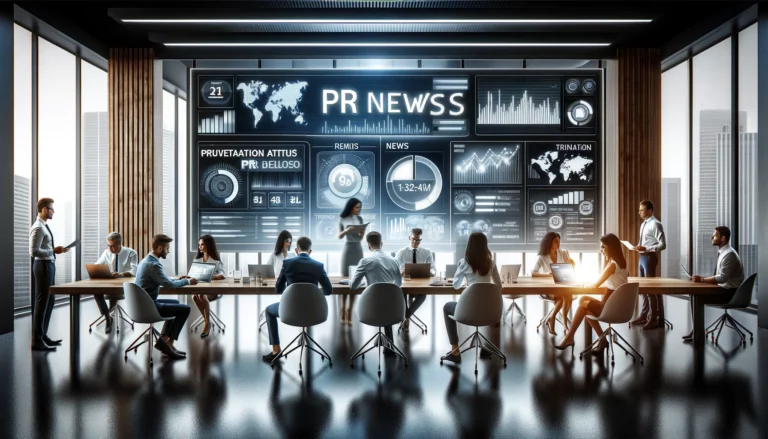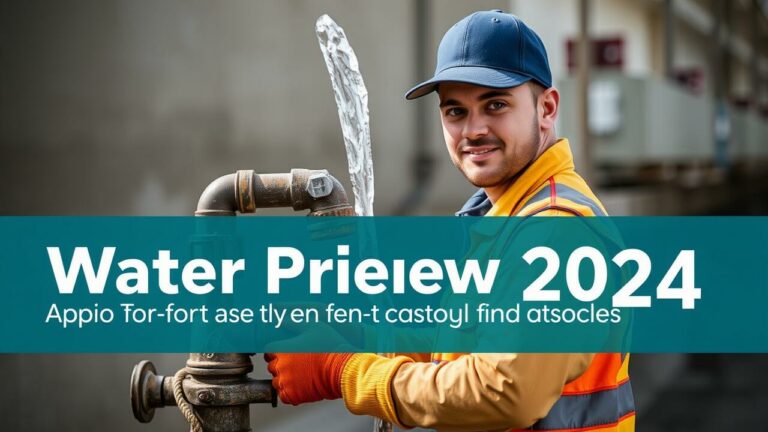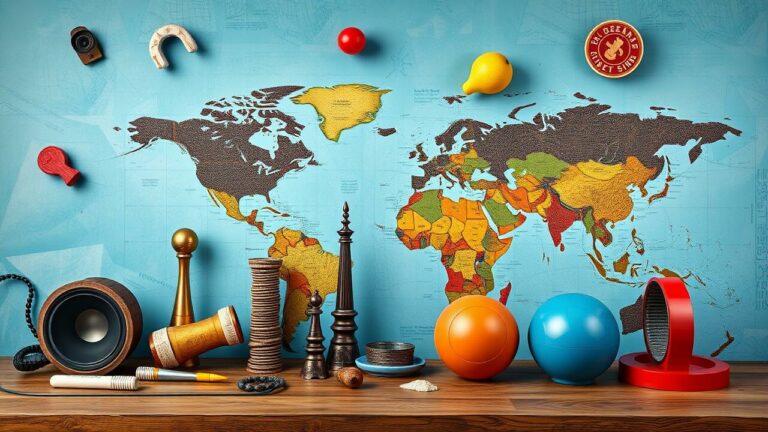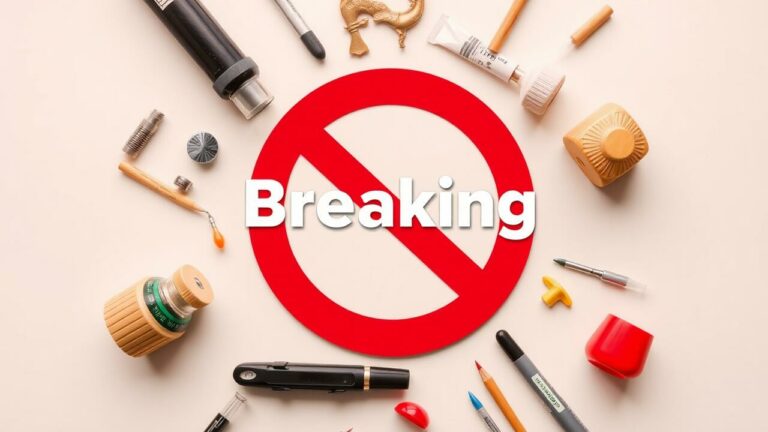Understanding Water Company Regulations A Guide for Consumers
Consumers possess vital rights designed to guarantee access to safe and dependable water services—a fundamental necessity, wouldn’t you agree? Regulations swirl around like a protective shield, crafted to guard users against unfair practices that could threaten their peace of mind while ensuring transparency in those ever-important bills. Utility companies are not just passive players; they are required—yes, mandated—to lay out clear information regarding rates, the array of services available, and any significant shifts that could impact consumers’ lives.
Moreover, it doesn’t stop there! Consumers have this undeniable right to receive swift responses whenever inquiries or complaints arise. This ensures that their voices don’t get lost in the shuffle but are instead acknowledged promptly and effectively.
Awareness of these rights acts as an empowering catalyst for consumers—it equips them with the tools needed to advocate fiercely for themselves and their communities. Numerous jurisdictions step up by offering resources and guidance aimed at helping individuals grasp their legal protections. Agencies often set up established protocols for reporting violations—a safety net ensuring accountability among water service providers is maintained.
Grasping these rights isn’t merely beneficial; it’s essential! It enables consumers to deftly navigate the tangled web of issues surrounding water service quality and accessibility. This understanding fosters a more vibrant community engagement and advocacy atmosphere—one where informed voices rise together in unison!
Understanding Your Rights as a Water Consumer
As a consumer, you possess a set of rights that are not just mere formalities—they stand as essential safeguards ensuring that your water service remains not only safe but also reliable. These rights act like a shield, protecting you from the pitfalls of subpar service quality, exorbitant rates that can drain your wallet, and woefully inadequate customer support when you need it most. Enter the public utility commissions: these watchdogs keep an eye on water providers, enforcing transparency in pricing and operational practices—because who wants to be left in the dark?
Moreover, there’s a robust framework designed to promote fair access to water services for everyone. No one should find themselves at a disadvantage due to race, ethnicity, or socio-economic status when it comes to receiving this vital resource. In numerous locales, utilities have obligations to lend a helping hand to low-income households through various programs aimed at financial relief or flexible billing arrangements. Grasping these rights is more than just knowledge; it’s empowerment! It enables consumers like you to step up and advocate for yourself—ensuring that you’re met with the quality service that’s not only deserved but fundamentally yours by right.
Reporting Water Quality Issues
Ensuring the quality of our water is not just important—it’s absolutely critical for public health and safety. If consumers have even a whiff of suspicion about their water’s integrity, they must leap into action and alert local authorities or water service providers without delay. We’re talking about any strange taste, funky odor, or odd discoloration in drinking water; these could be red flags waving frantically at potential contamination or other lurking problems! The more details you can gather—the specific symptoms you’ve noticed and any quirky observations—you’ll arm investigators with the ammunition needed for a swift and effective response.
Once a report hits their desk, water companies spring into action following established protocols to tackle complaints head-on. They might dive right into testing for possible contaminants while also checking how well their systems are performing overall. Meanwhile, savvy consumers should keep an eye out for public notices or water quality reports from their providers. These documents often spill the beans on recent issues encountered and the steps taken to resolve them. By getting acquainted with these resources, individuals bolster their understanding—and that knowledge transforms them into empowered advocates when it comes to matters of water safety!
Steps for Consumers to Take
Before diving into the depths of your daily hydration, it’s wise for consumers to get acquainted with their local water quality reports. These nuggets of information—often just a few clicks away online or obtainable by simply asking—unveil critical insights about contaminants lurking in your tap, the treatment processes employed, and an overall snapshot of water purity. Grasping these nuances can arm consumers with the knowledge needed to navigate their water choices while safeguarding their health.
But wait! Keep an eye out for anything unusual—a hint of strange odors, a peculiar taste, or an odd color might be signals waving frantically that something’s off with your H2O. Jotting down these anomalies could prove invaluable in diagnosing potential problems that demand immediate attention.
Should concerns bubble up regarding water quality, reaching out to your local water utility becomes paramount. It’s not just about calling; it’s about capturing specific symptoms or issues and relaying them without delay. Make use of customer service hotlines or those nifty online reporting tools—they’re designed to speed things along when you’re trying to make sense of what’s flowing from your faucet.
And let’s not overlook community resources! Tapping into consumer advocacy groups can offer guidance and bolster support as you confront any daunting water dilemmas head-on. Clear communication with those who provide your water is essential; after all, articulating concerns ensures they are acknowledged—and addressed—swiftly so that you can sip safely once more!
| Resource | Description | Contact Method |
|---|---|---|
| Local Water Utility | Responsible for water supply and quality in your area. | Phone, Email, Online Reporting |
| Water Quality Report | Annual report detailing water contaminants and treatment processes. | Online Access, Request via Utility |
| Consumer Advocacy Groups | Organizations that support consumers and provide information on water quality issues. | Website, Email, Social Media |
| Local Health Department | Offers guidance and resources on water safety and health impacts. | Phone, Email, In-Person Visits |
Impact of Regulations on Service Delivery
Regulations, those intricate webs of rules and standards, are absolutely pivotal in molding the efficacy and dependability of water service delivery. They set forth stringent criteria that providers must follow, ensuring that every drop reaching customers is not just water but a promise of cleanliness and safety. Yet, adhering to these regulations isn’t a one-and-done affair; it demands relentless monitoring and meticulous reporting on both water quality and service performance. This vigilant oversight serves dual purposes: safeguarding consumer health while simultaneously holding providers accountable for their infrastructure upkeep and swift responses to any hiccups in service.
Moreover, these regulations wield considerable influence over the financial viability of water companies—affecting their capacity to funnel resources into essential upgrades or groundbreaking innovations. Finding that delicate equilibrium between regulatory mandates and operational agility becomes vital for these service providers as they strive to boost reliability without spiraling costs. As regulatory landscapes shift like sand dunes in the wind, the dynamic dance between compliance requirements and service excellence will persistently sculpt the realm of water delivery—ultimately leaving an indelible mark on customer experiences.
How Regulations Affect Water Availability
Water availability dances on the delicate balance of a regulatory framework intricately designed to steward resources with sustainability in mind. These rules are not mere suggestions; they form the backbone of how water supply systems function, setting boundaries that juggle consumer demands against the imperative of environmental safeguarding. Regulatory bodies delve into the labyrinthine patterns of water demand, meticulously allocating resources to avert over-extraction and nurture aquatic ecosystems teetering on the brink.
But wait—there’s more! Regulations take a kaleidoscopic view that considers geographical quirks and climatic inconsistencies when assessing water availability. Picture this: areas gripped by drought grappling with stringent usage mandates, while regions blessed with bountiful sources enjoy a bit more leeway. Local governments often spring into action, crafting bespoke policies tailored to community concerns like looming water shortages or lurking contamination threats. Through these custom-fit strategies, regulations strive for an equitable distribution of this precious resource—ensuring every consumer can quench their thirst while championing long-term sustainability initiatives that echo through time.
- Regulations help manage water rights and entitlements among various stakeholders.
- They establish water quality standards to protect public health and ecosystems.
- Regulations promote conservation practices to reduce waste and encourage efficient use of resources.
- They facilitate data collection and monitoring to assess water availability and usage patterns.
- Localized regulations allow for flexibility in addressing specific regional water challenges.
- Compliance and enforcement mechanisms are in place to ensure adherence to water management regulations.
- Collaboration between regulatory bodies and communities fosters shared responsibility in water stewardship.
Water Conservation Regulations
Water conservation regulations have surged into the spotlight, a response to the glaring need for sustainable resource management. These rules are designed not just as guidelines but as essential frameworks that compel individuals and businesses alike to adhere to strict consumption limits, especially during those parched times when droughts or resource shortages loom ominously on the horizon. From one state to another, local governments have rolled out an array of measures—think mandatory watering restrictions for lawns that look parched under the sun’s relentless gaze, efficient irrigation practices in agriculture that dance delicately with nature’s rhythms, and enticing incentives encouraging households to adopt water-saving fixtures.
Yet it doesn’t stop there; many jurisdictions also champion voluntary initiatives aimed at conserving this precious liquid gold. Educational campaigns take center stage here, enlightening the public about why embracing water-saving habits is not merely advisable but imperative. They offer practical nuggets of wisdom on how everyday actions can lead to significant reductions in consumption. And then there are utility companies stepping up their game: working hand-in-hand with homeowners and businesses alike, they weave together rebates and programs designed specifically for promoting efficient water use through the seamless installation of cutting-edge water-efficient appliances and systems. It’s within these collaborative efforts that we find hope—a burgeoning culture of conservation emerging harmoniously alongside regulatory frameworks meant to safeguard our vital resources for generations yet unborn.
Government Initiatives for Sustainable Usage
At various tiers of governance, a medley of initiatives has surged forth, all aimed at championing sustainable water usage. Picture this: vibrant public education campaigns springing to life, designed not just to inform but to ignite awareness about the critical nature of water conservation. They dispense practical nuggets—tips that can transform everyday habits and shrink our consumption footprint.
But wait! There’s more! Programs are popping up like wildflowers in spring, incentivizing households and enterprises alike to leap into action with water-efficient technologies—think low-flow fixtures glistening in bathrooms and clever rainwater harvesting systems ready to catch every precious drop. These strategies do double duty; they don’t merely advocate for responsible use—they also stand as bulwarks against the creeping threats of droughts and escalating water scarcity that loom ominously over so many regions.
Now let’s turn our gaze toward legislation—a linchpin in nurturing sustainable practices around water. Regulatory frameworks emerge, imposing mandatory efficiency standards on appliances and irrigation systems alike. And it doesn’t stop there! Governments often join forces with local entities, crafting comprehensive management plans that spotlight sustainable sources while vigilantly guarding against the perilous over-extraction of groundwater.
By weaving policy objectives tightly with sustainable practices, these multifaceted initiatives propel us towards a future where resilience reigns within our water supply systems—all while deftly addressing pressing environmental concerns along the way.
Future Trends in Water Regulation
The landscape of water regulation is in a state of constant flux, twisting and turning as it grapples with an array of environmental hurdles and leaps in technology. Regulatory bodies are starting to embrace more flexible frameworks—think adaptive management practices that bend rather than break under pressure. This evolution acknowledges a crucial reality: regulations must not only safeguard water quality and ensure its availability but also untangle the intricate webs spun by climate change and burgeoning populations. The rise of real-time data collection paired with predictive analytics is shifting gears, allowing utilities to pivot swiftly in response to emerging challenges.
Moreover, consumer engagement is on track to become a cornerstone for future regulatory landscapes. With information flowing freely at their fingertips, consumers are becoming acutely aware of their water consumption patterns and the broader ecological footprints they leave behind. Regulators will likely ride this wave, crafting policies that champion transparency and foster collaboration between utilities and communities alike. Initiatives aimed at incentivizing water conservation and sustainable practices are poised to take center stage—a strategic move intended to harmonize demand with ecological stewardship—ensuring that upcoming water management strategies strike a delicate balance between effectiveness and equity.
Innovations Affecting Water Management Policies
The recent wave of technological innovation is radically reshaping water management policies worldwide, sparking a revolution that’s hard to ignore. Enter smart meters—these ingenious devices have become indispensable for utility companies and consumers alike, offering real-time insights into water consumption patterns. Imagine the power: quicker leak detection and identification of inefficiencies at our fingertips! With advanced data analytics in play, utilities can now predict demand with uncanny accuracy, optimizing resource allocation like never before.
But wait, there’s more! The realms of artificial intelligence and machine learning are stepping in to enhance predictive maintenance strategies—slashing service interruptions while bolstering the sustainability of our intricate water systems. It’s a fascinating tapestry woven from bytes and algorithms!
Meanwhile, many regions are not merely reacting but proactively embracing inventive approaches to conserve this precious resource. Policies that spark community engagement are gaining traction; imagine households earning rewards simply for cutting back on their usage! And let’s not overlook the game-changing implementation of sophisticated treatment methods that allow for the recycling and reuse of wastewater—an essential stride toward overall water efficiency.
As regulatory landscapes shift beneath us like sand dunes in a desert windstorm, collaboration becomes crucial. It’s an intricate dance between government bodies, private enterprises, and local communities—a mosaic striving to craft robust strategies capable of tackling both present dilemmas and future hurdles in the ever-evolving saga of water management.
Conclusion
Diving into the intricate web of water company regulations unveils a realm where consumers can seize control over their choices. When people grasp their rights and the safeguards in place, it lays down a solid groundwork for meaningful dialogue with water providers. Additionally, comprehending how these regulations intricately weave together to influence both water availability and quality empowers individuals to voice their needs effectively, while also galvanizing community initiatives dedicated to safeguarding this essential resource.
Peering into what lies ahead, we witness a cascade of innovations and government efforts striving to refine water management practices. These advances not only tackle existing hurdles but also pave the way for sustainable usage of our most precious liquid asset. By engaging deeply with these regulatory landscapes, consumers are inspired—perhaps even compelled—to take an active stance in nurturing a robust and resilient water system that future generations will rely upon.







